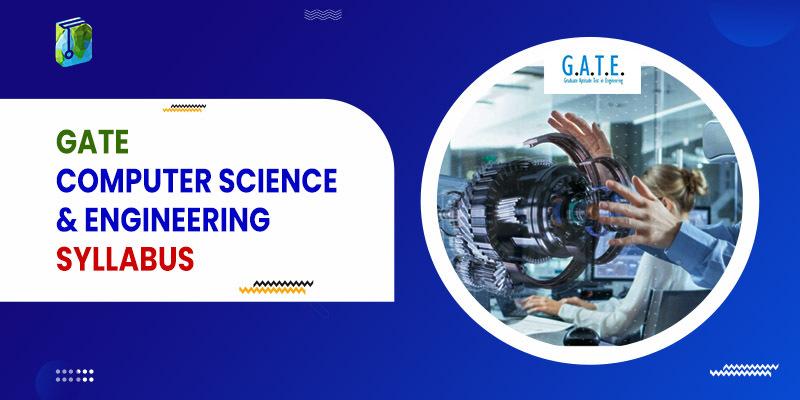Computer Science is a very popular branch of engineering. A lot of students opt for this branch as it has greater scope and is in great demand. The GATE syllabus for the CS branch has been released along with the official notification.
This article will give you complete information regarding the GATE Computer Science Engineering Syllabus 2024.
GATE Computer Science Engineering Syllabus – CS 2024
GATE Computer Science (CS) Syllabus consists of several sections General Aptitude, Engineering Mathematics, Main Syllabus.
Section 1: Engineering Mathematics
Discrete Mathematics: Propositional and first-order logic. Sets, relations, functions, partial orders, and lattices. Groups. Graphs: connectivity, matching, coloring. Combinatorics: counting, recurrence relations, generating functions.
Linear Algebra: Matrices, determinants, the system of linear equations, eigenvalues and eigenvectors, LU decomposition.
Calculus: Limits, continuity, and differentiability. Maxima and minima. Mean value theorem. Integration.
Probability: Random variables. Uniform, normal, exponential, Poisson, and binomial distributions. Mean, median, mode, and standard deviation. Conditional probability and Bayes theorem.
Section 2: Digital Logic
Boolean algebra. Combinational and sequential circuits. Minimization. Number representations and computer arithmetic (fixed and floating-point).
Section 3: Computer Organization and Architecture
Machine instructions and addressing modes. ALU, data path, and control unit. Instruction pipelining. Memory hierarchy: cache, main memory, and secondary storage; I/O interface (interrupt and DMA mode).
Section 4: Programming and Data Structures
Programming in C. Recursion. Arrays, stacks, queues, linked lists, trees, binary search trees, binary heaps, graphs.
Section 5: Algorithms
Searching, sorting, hashing. Asymptotic worst-case time and space complexity. Algorithm design techniques: greedy, dynamic programming, and divide‐and‐conquer. Graph search, minimum spanning trees, shortest paths.
Section 6: Theory of Computation
Regular expressions and finite automata. Context-free grammars and push-down automata. Regular and context-free languages, pumping lemma. Turing machines and undecidability.
Section 7: Compiler Design
Lexical analysis, parsing, syntax-directed translation. Runtime environments. Intermediate code generation.
Section 8: Operating System
Processes, threads, inter‐process communication, concurrency, and synchronization. Deadlock. CPU scheduling. Memory management and virtual memory. File systems
Section 9: Databases
ER‐model. Relational model: relational algebra, tuple calculus, SQL. Integrity constraints, normal forms. File organization, indexing (e.g., B and B+ trees). Transactions and concurrency control.
Section 10: Computer Networks
Concept of layering. LAN technologies (Ethernet). Flow and error control techniques, switching. IPv4/IPv6, routers, and routing algorithms (distance vector, link state). TCP/UDP and sockets, congestion control. Application layer protocols (DNS, SMTP, POP, FTP, HTTP). Basics of Wi-Fi. Network security: authentication, basics of a public key and private key cryptography, digital signatures and certificates, firewalls.
Conclusion
Computer science is an ever-growing field. There are lakhs of candidates who wish to enter this sector and earn good money and reputation. It is a vast field with enormous opportunities for you to progress in your career.
The demand for computer science graduates is escalating day by day. If you are interested in this field, then you must go for it!
Good Luck!
People are also reading:

